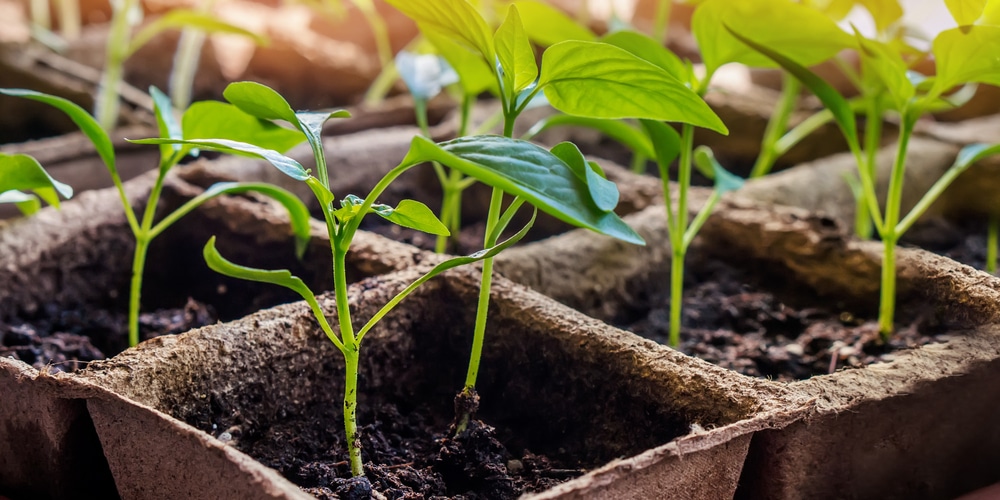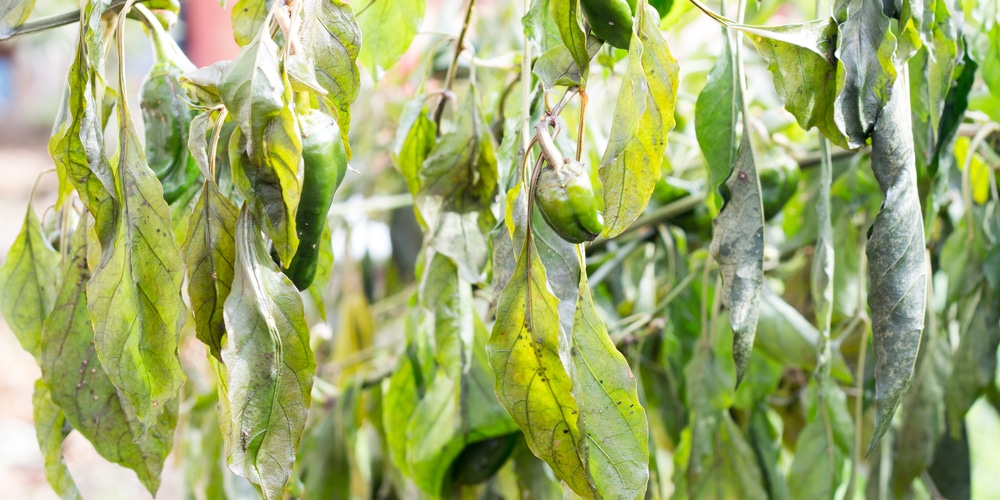Pepper plants can take a while to mature and produce fruit due to their long growing season. This means that most pepper varieties need warm weather for longer than other types of vegetables. If you live in a cooler climate or plant your peppers late, the weather may get too cold. A temperature that is just fine for some plants can often be too cold for pepper plants.
In general, pepper plants need the temperature to be at least 50 degrees Fahrenheit, or they will suffer and potentially die. If the weather turns cold for the long term, your pepper plants are likely to die, especially if temperatures drop below 32F.
You’ll need to carefully plan when to plant your pepper seeds and where to keep your plants to avoid killing them with the cold. Let’s look at what temperature is too cold for pepper plants.
What Temp is too cold for pepper plants
Pepper plants will die due to frost when the temperature falls below 32 degrees Fahrenheit. Frost will turn the pepper plants’ leaves black, and if exposed to frost over the long term, the plant won’t recover. On the other hand, if the pepper plants are only exposed to frost for a few hours or the temperatures are slightly above 32F, the plant will survive but won’t grow well and will go into dormancy.
If you have a pepper plant with unripened fruit, it’s best to harvest them before the frost arrives. Then, the peppers can be stored in a cool, dry place and will still ripen.
Pepper plants grow best when the temperatures are between 70 to 85 degrees Fahrenheit. If you’re trying to grow pepper seeds and the temperature is below 70 degrees, you’ll find that the seed takes longer to germinate.
Protecting pepper plants from the cold

Pepper plants can be grown in the spring and summer as temperatures will be warm. Depending on your climate, you may find that the nights are colder than 50 degrees, and the plants will suffer. There are many things you can do to protect your pepper plants from the cold.
Cover your plants with plastic, a blanket, sheet, or tarp during the night. Ensure that the plastic isn’t touching the plants by using stakes, and remove it the following morning.
- Cover pepper seedlings with a tray cover or move them indoors.
- Use LED lights to provide warmth for your pepper plants; ensure these aren’t touching the plants.
- Move plants into a greenhouse, porch, or basement. Remember to move them outside in the morning, so they get the required sunlight, heat, and aeration.
- Grow peppers depending on your growing season
- Pepper plants have a long growing season and need enough sunshine and warm weather to grow well and produce a good crop. If you live in a cooler area with a shorter growing season, there are some things you can do to ensure your plants get enough heat.
Plant seeds indoors in the early spring
Pepper plants generally mature slowly, and many varieties need up to 120 days to start producing fruit. If you live in an area with a shorter growing season, you can give your peppers a head start by planting them indoors. Plant your seeds in your home four weeks before the last frost is expected to thaw. Once the last frost date has passed, you should wait two to four weeks and then move your young seedlings outdoors.
By planting peppers early, your plants will have the time to grow and produce a good crop. They will have ideal conditions to fruit during the summer before fall approaches and the weather starts to turn.
Grow a cold-tolerant pepper variety
Some pepper varieties have a shorter growing season or are more resistant to cold. You may like to try growing a smaller pepper plant that can be kept on your windowsill indoors.
Pepper plants such as Ace Pepper, Manzano pepper, Yankee bell pepper, and Intruder Pepper can cope with colder weather. You may choose to plant these varieties if you have a shorter growing season. They will continue to grow and produce fruit even when the temperature drops during the fall.
That being said, it’s worth noting that while these varieties are cold-tolerant, they will still die if there’s frost on the ground and the temperature is below 32 degrees.
Related and Useful: When to top Pepper Plants, What’s Eating Holes in Pepper Leaves?
Conclusion
Pepper plants grow best in temperatures of between 75 and 80 degrees. They’ll survive outside if the temperature is above 50 degrees but will die if there’s frost or if the temperature falls below 32 degrees Fahrenheit. For this reason, peppers should not be part of a fall garden.
